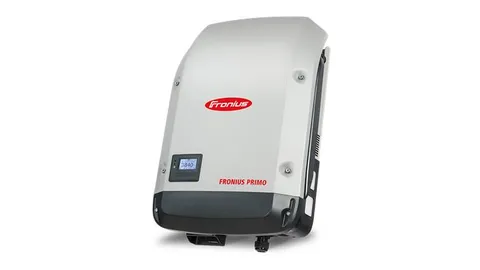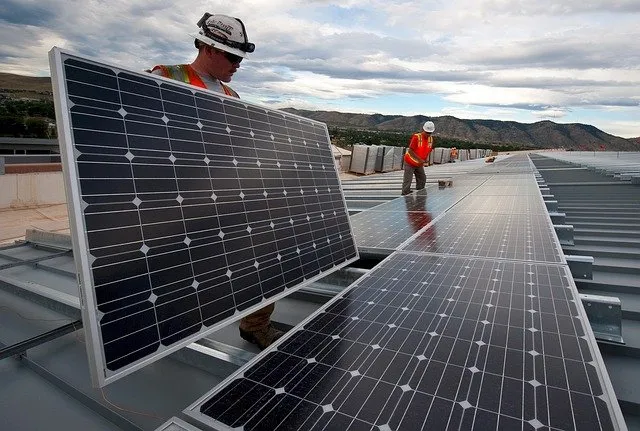Why is my solar inverter not working?
Solar power systems include the solar panels, inverters, a meter and batteries. The inverter is the crux of your solar system as without it, generating energy from sunlight wouldn't be possible. However, many solar owners don’t know if the solar system on their roof is working properly.
Typically solar inverters are meant to last 10-20 years but, if yours fails, do you know how or why? We’ve put together some handy hints to help you to tell if your solar inverter is working properly and troubleshooting tips if problems occur.
What is a solar inverter?
To put it extremely simply, the solar panels turn sunshine into direct current (DC) electricity and an inverter then converts it to alternating current (AC), which is the electricity that household appliances are powered by. Therefore, without an inverter, you cannot use the electricity that your solar panels are generating, making them ineffective.

Signs that your solar inverter could be faulty
There are a few signs to watch out for that are indicative your solar inverter is having problems:
- Your electricity bill has noticeably gone up
- Solar inverter is displaying a red or orange light during daylight
- Your inverter is displaying an error code
How do I check if the solar inverter is working properly?
Check the display panel
Firstly, check the display panel on the inverter and if there are any error codes, refer to the inverter manual to troubleshoot the issue. If there are no error codes, just refer to the lights as they should all be lighting up green if your inverter is working correctly.
Check the solar system logs
You can access this information either on the digital screen of the inverter (if it has one) or from an online inverter account that monitors your solar system output. The 3 main pieces of information you are looking for are:
- Amount of energy (kW) bring provided currently (this will change constantly)
- Amount of kW produced that day (best to check after sundown)
- Estimated total kilowatt-hours (kWh) produced since installation
Listen for noises
To ensure that your solar inverter is running smoothly, pay attention to strange noises such buzzing, humming or any other unusual sounds as these could indicate an issue.
Check the power output
To ensure your solar inverter is running effectively and efficiently, compare the power output to when it was first installed. You can do this by monitoring your solar power system online or look at your electricity bill.

5 most common solar inverter problems
Faulty installation
Unfortunately, it pains us to say, a frequent cause of the failure of an inverter is actually the installation of it in the first place. If the inverter’s capacity is not the same as that of the solar panels, the inverter will be unable to yield power efficiently.
Before hiring an electrician to install or repair your solar system and inverter, do your research. Check that the installer is a qualified expert with ample experience.
Overheating
Electrical components can be quite vulnerable in high temperatures. If these maximum operating conditions are exceeded in the inverter, it could result in a decrease of the electricity generated. Check that the inverter is in a cool, well ventilated locale and clean the dust filters routinely.
Isolation fault
The result of an isolation fault is that there will be a short circuit between the inner parts of the inverter. When this occurs, the inverter should produce an isolation alarm after the short circuit. The short circuits are usually caused by moisture, damaged cabling or poor connections of the DC cables.
Grid faults
The inverter can stop working if a grid fault causes too low, or too high, voltage. After a grid fault has occurred, the inverter should be able to restart on its own; if it does not, you will need to call a solar electrician. Circuit breakers or fuses can prevent the inverter from failing as a result of voltage fluctuation.
Maximum Power Point Tracking (MPPT)
Reduced power output from your solar system
With a variety of voltage levels produced by solar panels, it's important to make sure you're getting the most efficient output. MPPT algorithms are used to extract maximum power from a variety of voltage levels generated by your solar panels. The MPPT tracker is always adjusting levels so that your solar panels maintain maximum power production.
Who can repair a solar inverter?
Only ever have a fully qualified solar electrician repair solar inverters for you. It is prudent to bring in the professionals as not only do we have the right tools and equipment to complete the job, we can foresee other potential problems before they arise.
Not only is it due to the importance of having solar system repairs done effectively and efficiently, but we can do it safely! Never attempt any work on your solar system yourself.

What should I do if the inverter fails?
If the solar inverter is displaying an error code or you are experiencing solar system problems, it’s best to call our Powerix solar technicians for help on 0488 856 928 or complete our solar booking form today..
With our expertise and CEC accredited solar electricians, we can quickly diagnose the problem and get your solar inverter working properly.
